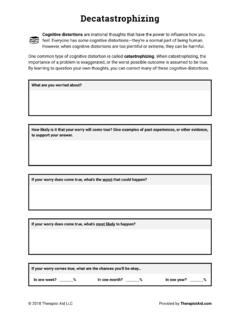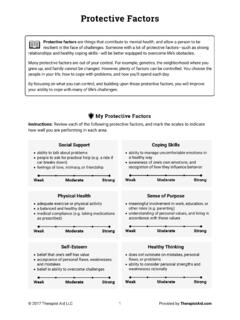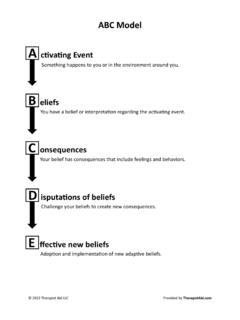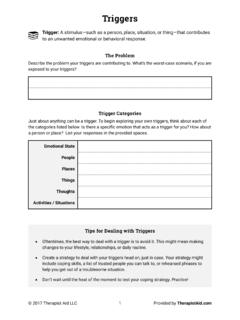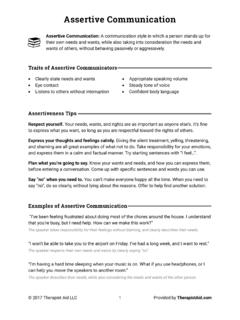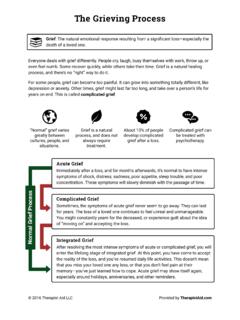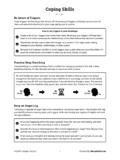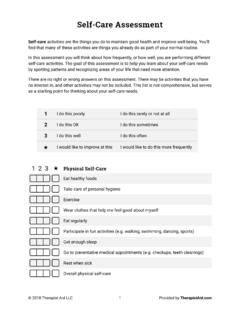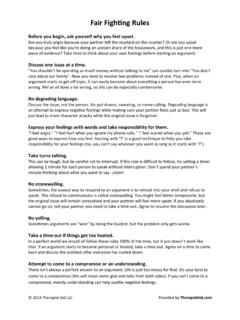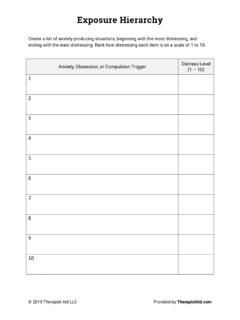Transcription of Deep Breathing - Therapist Aid
1 deep Breathing 2017 Therapist Aid LLC Provided by deep Breathing : a relaxation technique performed by purposefully taking slow, deep breaths. When practiced regularly, deep Breathing provides both immediate and long-term relief from stress and anxiety. How deep Breathing Works During periods of anxiety, the body triggers a set of symptoms called the stress response. Breathing becomes shallow and rapid, heart rate increases, and muscles become tense. In opposition to the stress response is the relaxation response. Breathing becomes deeper and slower, and the symptoms of anxiety fade away.
2 deep Breathing triggers this response. Instructions Sit back or lie down in a comfortable position. Close your eyes, if you would like to do so. When you re learning, try placing a hand on your stomach. If you breathe deeply enough, you should notice it rising and falling with each inhalation and exhalation. 1 Inhale. Breathe in slowly through your nose for 4 seconds. 2 Pause. Hold the air in your lungs for 4 seconds. 3 Exhale. Breathe out slowly through your mouth for 6 seconds. Tip: Pucker your lips, as if you are blowing through a straw, to slow your exhalation. 4 Repeat.
3 Practice for at least 2 minutes, but preferably 5 to 10 minutes. Tips If it isn t working, slow down! The most common mistake is Breathing too fast. Time each step in your head, counting slowly as you do so. Counting out your breaths serves a second purpose. It takes your mind off the source of your anxiety. Whenever you catch your mind wandering, simply return your focus to counting. The times we use for each step are suggestions, and can be lengthened or decreased. Lengthen the time if it feels natural to do so, or decrease the time if you feel discomfort.
